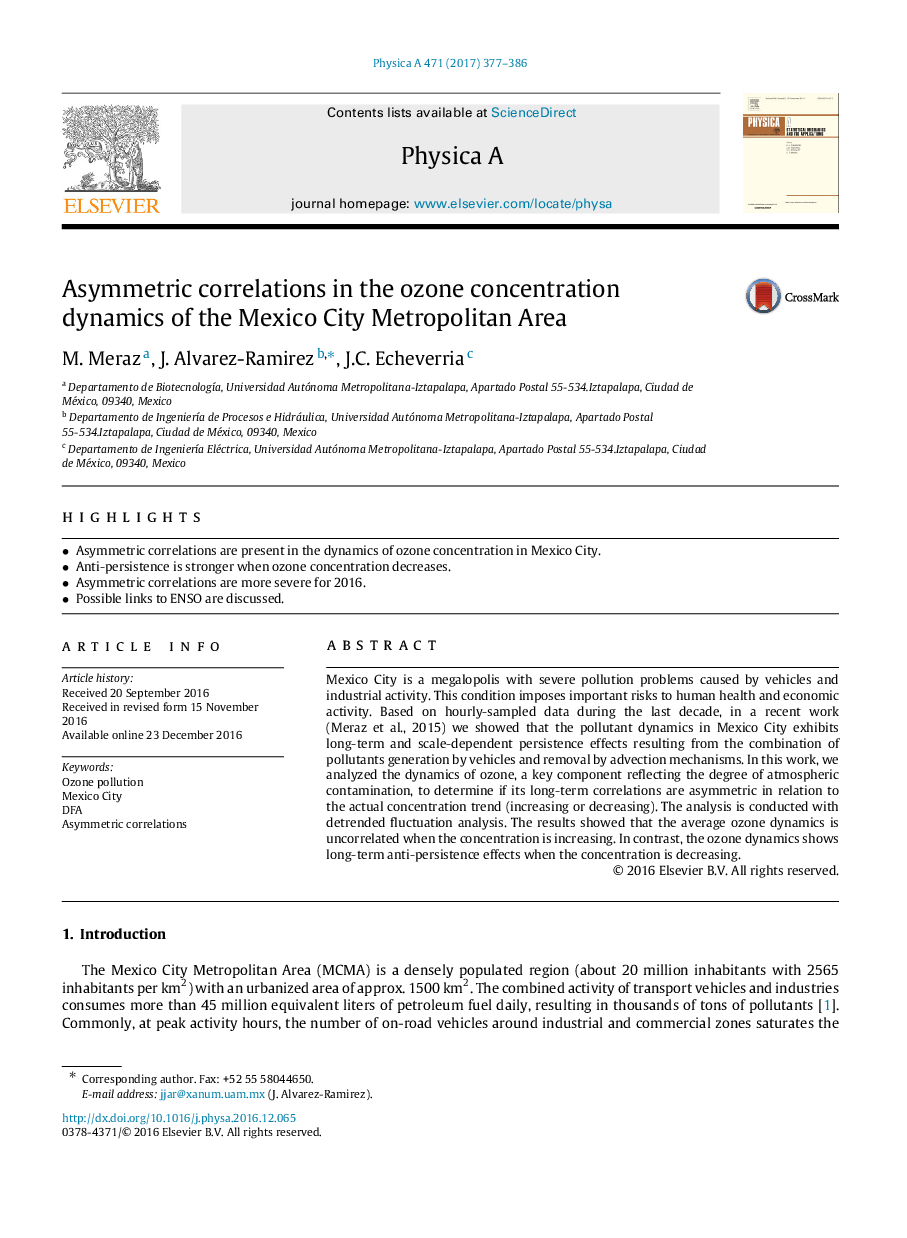| Article ID | Journal | Published Year | Pages | File Type |
|---|---|---|---|---|
| 5102945 | Physica A: Statistical Mechanics and its Applications | 2017 | 10 Pages |
Abstract
Mexico City is a megalopolis with severe pollution problems caused by vehicles and industrial activity. This condition imposes important risks to human health and economic activity. Based on hourly-sampled data during the last decade, in a recent work (Meraz et al., 2015) we showed that the pollutant dynamics in Mexico City exhibits long-term and scale-dependent persistence effects resulting from the combination of pollutants generation by vehicles and removal by advection mechanisms. In this work, we analyzed the dynamics of ozone, a key component reflecting the degree of atmospheric contamination, to determine if its long-term correlations are asymmetric in relation to the actual concentration trend (increasing or decreasing). The analysis is conducted with detrended fluctuation analysis. The results showed that the average ozone dynamics is uncorrelated when the concentration is increasing. In contrast, the ozone dynamics shows long-term anti-persistence effects when the concentration is decreasing.
Keywords
Related Topics
Physical Sciences and Engineering
Mathematics
Mathematical Physics
Authors
M. Meraz, J. Alvarez-Ramirez, J.C. Echeverria,
